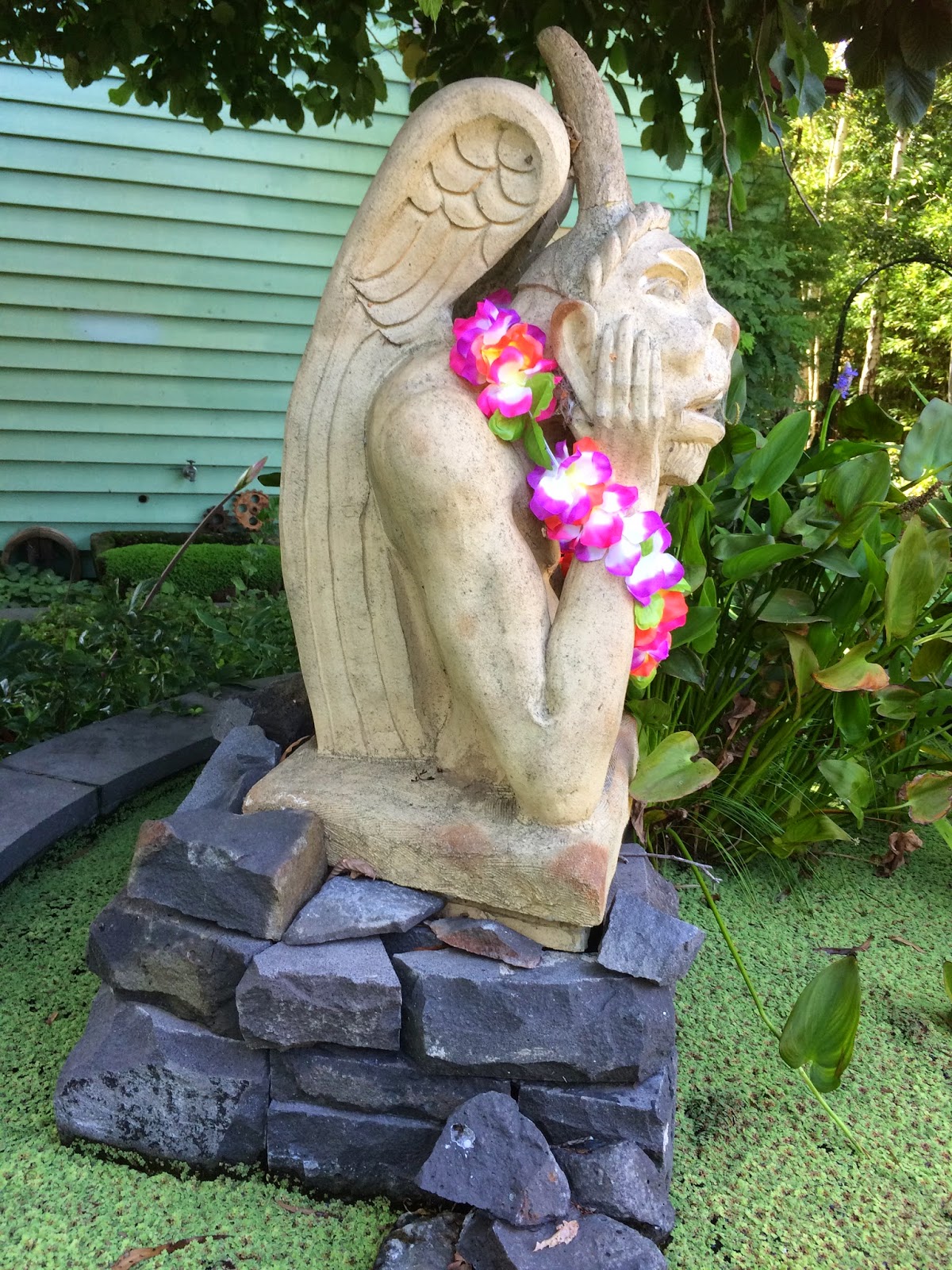As I said last week, our garden was a bit of an extravaganza, built for the long term future. By nature I am cautious with money, but had the foresight to fall in love with a man of vision: a world-builder. Where I deal with text; he deals with concepts. I am good at the trees; he is good at the forest.
But in this garden I did indulge my desire at one extravagant point. Our first plan for the garden was a bushland creek, but because we also love the ornate and the decorative, the garden did become more structured, and even a little gothic in form. So that when it came to a feature piece for the central fishpond, I had a vision of including some version of Viollet le Duc's nineteenth-century chimaeras from Notre Dame in Paris. Were any available on line? Yes, but they were dinky and cute and too small, and I remember thinking their fingers were too short...
David, our designer, got on the case, and found a company that would make a figure to order: I dug out photos, and several weeks later, we were able to install our beloved creature. Of course we call him Quasimodo. He's had various adventures already. Sometimes his fountain tube gets blocked, and we have to poke his throat to clear out sticks and things; or wade into the pond to adjust the flow of water. He also lost his horns when a big tree fell on him. Paul replaced them just a few months ago. He's still wearing a lei from a party in the summer.
What has this to do with bluestone? Look at the base, where he is surrounded by bluestone chips. David described him as sitting on his "gothic pile", surveying the beauty of the garden from his gothic wreckage.
But the phrase "gothic pile" also works to describe David's sense of our old house. In the book he wrote later, The Heart of the Garden, David describes us both as "literature academics who live in a rambling weatherboard house, jam-packed with much-loved books", a statement that is only partly true. But here is his part of his description of the bluestone and sandstone in the garden. I love the last paragraph.

Bluestone, here, is gothic, but risks being "foreboding"; it is handcrafted, evocative of preindustrial church construction, and is also, like us, "in a constant state of flux — falling apart and coming together again."
But in this garden I did indulge my desire at one extravagant point. Our first plan for the garden was a bushland creek, but because we also love the ornate and the decorative, the garden did become more structured, and even a little gothic in form. So that when it came to a feature piece for the central fishpond, I had a vision of including some version of Viollet le Duc's nineteenth-century chimaeras from Notre Dame in Paris. Were any available on line? Yes, but they were dinky and cute and too small, and I remember thinking their fingers were too short...
David, our designer, got on the case, and found a company that would make a figure to order: I dug out photos, and several weeks later, we were able to install our beloved creature. Of course we call him Quasimodo. He's had various adventures already. Sometimes his fountain tube gets blocked, and we have to poke his throat to clear out sticks and things; or wade into the pond to adjust the flow of water. He also lost his horns when a big tree fell on him. Paul replaced them just a few months ago. He's still wearing a lei from a party in the summer.
What has this to do with bluestone? Look at the base, where he is surrounded by bluestone chips. David described him as sitting on his "gothic pile", surveying the beauty of the garden from his gothic wreckage.
But the phrase "gothic pile" also works to describe David's sense of our old house. In the book he wrote later, The Heart of the Garden, David describes us both as "literature academics who live in a rambling weatherboard house, jam-packed with much-loved books", a statement that is only partly true. But here is his part of his description of the bluestone and sandstone in the garden. I love the last paragraph.

Bluestone, here, is gothic, but risks being "foreboding"; it is handcrafted, evocative of preindustrial church construction, and is also, like us, "in a constant state of flux — falling apart and coming together again."






No comments:
Post a Comment